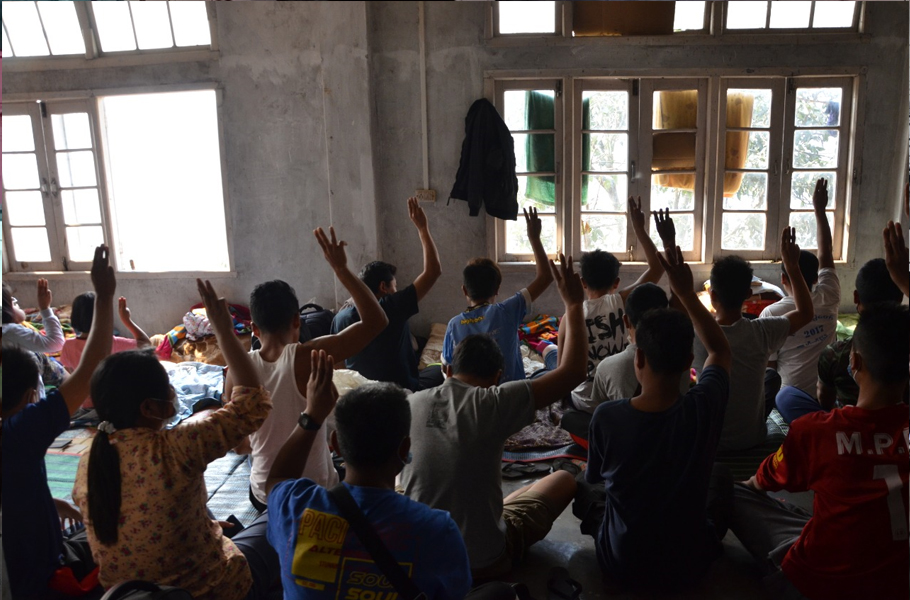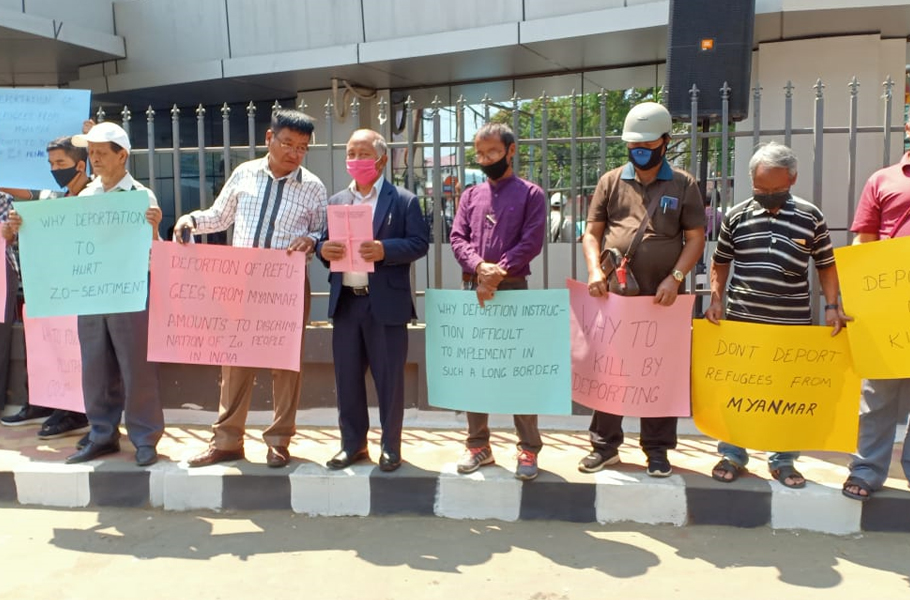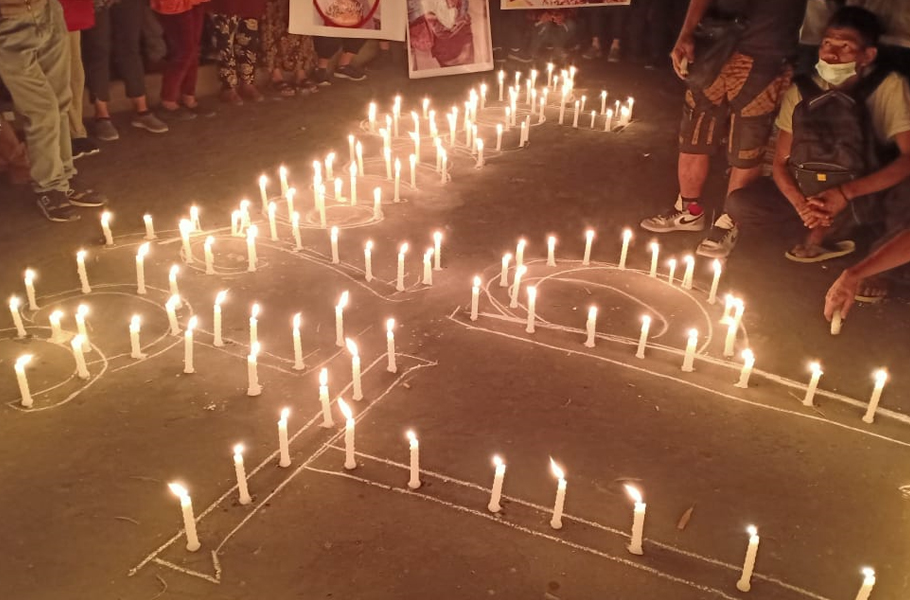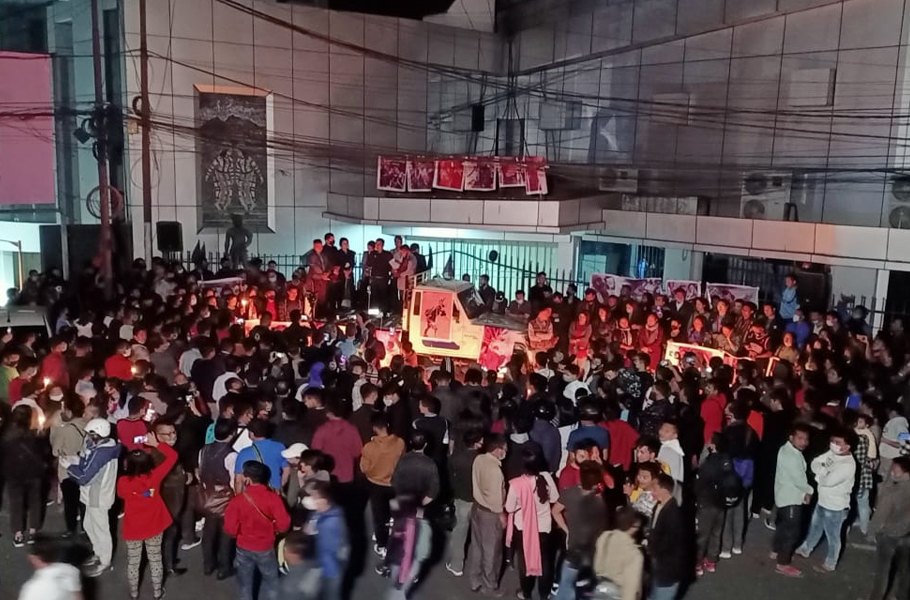
- Home
- News
- Analysis
- States
- Perspective
- Videos
- Education
- Entertainment
- Elections
- Sports
- Features
- Health
- Budget 2024-25
- Business
- Series
- Bishnoi's Men
- NEET TANGLE
- Economy Series
- Earth Day
- Kashmir’s Frozen Turbulence
- India@75
- The legend of Ramjanmabhoomi
- Liberalisation@30
- How to tame a dragon
- Celebrating biodiversity
- Farm Matters
- 50 days of solitude
- Bringing Migrants Home
- Budget 2020
- Jharkhand Votes
- The Federal Investigates
- The Federal Impact
- Vanishing Sand
- Gandhi @ 150
- Andhra Today
- Field report
- Operation Gulmarg
- Pandemic @1 Mn in India
- The Federal Year-End
- The Zero Year
- Premium
- Science
- Brand studio
- Newsletter
- Home
- NewsNews
- Analysis
- StatesStates
- PerspectivePerspective
- VideosVideos
- Entertainment
- ElectionsElections
- Sports
- Features
- BusinessBusiness
- Premium
- Loading...
Premium - India-Canada ties

A month on, mixed signals from Indian govt keep Myanmar ‘refugees’ in limbo
lt will be in the long-term national interest of lndia as well as the larger cause of humanity to respect the human rights of the persecuted Myanmar nationals.

It was well past midnight on March 26, when sudden sounds of gunshots and explosions jolted M Mohan out of his bed. Mohan, a businessman in Manipur’s bordering town of Moreh, is no stranger to such sounds. The bustling commercial town, around 110 kilometres from Manipur’s capital Imphal, has been a witness to several gun battles between insurgents and Indian security forces, and at...
It was well past midnight on March 26, when sudden sounds of gunshots and explosions jolted M Mohan out of his bed.
Mohan, a businessman in Manipur’s bordering town of Moreh, is no stranger to such sounds. The bustling commercial town, around 110 kilometres from Manipur’s capital Imphal, has been a witness to several gun battles between insurgents and Indian security forces, and at times, between warring militant groups.
That night the commotion, however, was on the other side of the border. The international border between India and Myanmar is just about 150 metres from Mohan’s residence.
“I immediately realised the exchange of fire and explosions were taking place on the other side of the border, maybe just 500-600 metres from my house,” Mohan said.
The severity of the incident dawned early the next day. Hundreds of men and women with their children in tow helplessly tried to sneak into India through Moreh borders but were pushed back by the Assam Rifles that guards the border, according to eyewitnesses.
The police, however, said eight Myanmar nationals, including five women, who attempted to cross the border after the firing incident, were pushed back.
Only three Myanmar nationals, who were injured in the firing, were given entry and provided medical aid. The three, identified as Nay Nay Thoo, Phuyoo and Nyae Koon, were subsequently taken to the Jawaharlal Nehru Institute of Medical Sciences (JNIMS), Imphal, for better treatment.
Tipping point
Civil society organisations and locals in Moreh said the March 26 incident was a breaking point.
On that ill-fated day, Myanmar’s military opened fire on protesters in various regions of the country, including Sagaing that shares a border with Moreh.
At least 100 people, including many children, were killed. Since the February 1 military coup, around 500 people have died in the country as the junta struggled to control the protests, according to various media reports that quoted local monitoring groups in Myanmar.
According to police sources in Moreh, one person was killed and seven injured in the midnight crackdown against pro-democracy supporters in Tamu, across Moreh in Tengnoupal district. The three injured, now recuperating at JNIMS, are among the seven wounded in the firing.

“Until that day, one or two persons were sneaking through the porous border to take shelter with their relatives on this side of the border. But after that night, the trickle turned into a deluge,” said Mohan, the spokesperson of Tamil Sangam, Moreh, an influential civil organisation of the town.
According to an estimate of the Citizens Committee, Manipur (CCM), more than 1,000 people have so far taken refuge in bordering villages and towns in Tengnoupal, Chandel, Churachandpur, Kamjong and Ukhrul districts that share boundaries with Myanmar.
There are three journalists of Mizzima, a leading multimedia news organisation of Myanmar, and their family members among those who sneaked into Manipur, said CCM convener and a human rights activist Babloo Loitongbam.
Similar migration has been reported from neighbouring Mizoram, where 14 lawmakers are among the “refugees”.
Mismatch and mixed signals
According to a survey of the Young Mizo Association (YMA) 2,686 Myanmar nationals have so far taken shelter in Mizoram. The Assam Rifles on April 22 evening, however, claimed the number is only 348.
The mismatch of government statistics and the ground reality is because of India’s wishy-washy handling of one of the biggest humanitarian crises in its backyard.
The Union ministry of home affairs (MHA), on February 25, directed the governments of Mizoram, Nagaland, Manipur and Arunachal Pradesh and the Assam Rifles to stop the influx.
These states share a 1,643 km long porous border with Myanmar. The mockery of this man-made border is so stark that at Longwa village in Nagaland’s Mon district, the international line passes through the house of the village chief, placing his bedroom in one country and the kitchen in another.
“Given the porous nature of the border it is impossible to stop the influx, particularly when so many people are desperate to cross over to escape persecution,” said a senior Assam Rifles official wishing anonymity.
As most people on either side of the border are from the same ethnic stock, the Indian villagers are only too willing to give shelter to their ethnic brethren at this time of crisis, virtually invalidating the MHA’s no-influx order.
The local sentiment in favour of the fleeing Myanmar nationals is so strong that the BJP-led government in Manipur was forced to withdraw its March 26 directive barring local authorities and civil society organisations from providing food or shelter to Myanmar refugees.
The outcry triggered by the order forced the government to take a U-turn.
“In order to avoid this misunderstanding, I am directed to convey the decision of the government that it has decided to withdraw the March 26 letter,” said Manipur’s special secretary (home) H Gyan Prakash in another order issued on March 29.

In the fresh order, Prakash even claimed that the state government was taking all humanitarian steps and providing aid to the refugees, a claim strongly contested by the state’s civil society organisations.
Ground reports suggest the Manipur government is leaving no stone unturned to stop the fleeing Myanmar nationals from entering India and pushing back those who have managed to sneak in.
Additional superintendent of police of Chandel, L Shangkerjit, told mediapersons that the state police pushed back 73 Myanmar citizens who had illegally crossed into the state.
He said local police and the personnel of Manipur Rifles have been deployed to stop the illegal entry of Myanmar citizens into the district. Besides, the Assam Rifles has opened a temporary post in every porous route along the Indo-Myanmar border as a preventive step, he added.
“The state government is now in a denial mode. It simply does not acknowledge the presence of refugees in the state. So, the entire burden of looking after these fleeing people is on the poor villagers, who themselves survive on subsistence economy,” Loitongbam said.
The CCM has been repeatedly urging the government not to turn a blind eye to the crisis.
A long wait
Meanwhile, the three journalists and their family members who had been ‘hiding’ in Moreh were given ‘safe passage’ to Imphal on April 21 by the state government only after a directive from the Manipur High Court.
The interim order was passed by the court acting on a writ petition filed by senior lawyer and human rights activist Nandita Haksar. The petition filed on March 19 pleaded that the Manipur government be directed to provide safe passage to the seven persons, four adults and three children, to travel to New Delhi to seek protection from the United Nations High Commissioner for Refugees (UNHCR).
While the court was earlier scheduled to hear the petition again on April 26, the next day for hearing has been fixed for April 29 as the state government sought more time on the grounds that it is “discussing the matter at the highest level”.
The ‘refugees’ both in Manipur and Mizoram are eagerly awaiting the court’s directive. If the seven persons are allowed to move the UNHRC for refugee status, it would open a window of hope for others, said a Myanmar national taking shelter in Mizoram’s Serchhip district.
The situation is slightly better for those seeking refuge in Mizoram as the state’s Mizo National Front government refused to toe the MHA’s order and decided to extend all possible humanitarian aid officially.

Unlike in Manipur, makeshift camps have been made in Mizoram to house the fleeing multitude. The state government is even contemplating to provide them some kind of employment.
Mizoram Chief Minister Zoramthanga last month made a fervent appeal to Prime Minister Narendra Modi to allow political asylum to Myanmar nationals taking shelter in India.
The Modi government has so far remained indifferent to what Zoramthanga described as “a human catastrophe of gigantic proportions happening in Myanmar right in front of our eyes”.
Instead, the Centre has taken a tough stand against the influx, siding with the Tatmadaw—the armed forces of Myanmar.
New Delhi’s worry is that if it antagonises Myanmar’s military, which has supported India in its fight against insurgents groups, the junta may completely veer towards China, a situation that can destabilise the Northeast.
At the same time, India can’t afford to ignore the groundswell of support for the fleeing Myanmar nationals among people and civil society organisations in Mizoram and Manipur.
Already, Mizoram witnessed protests over the MHA’s order. The YMA donated Rs 14 lakh for the welfare of the refugees in the state. These developments manifest overwhelming local support for the ‘refugees’.
“lt will be in the long-term national interest of lndia as well as the larger cause of humanity to respect the human rights of the persecuted Myanmar nationals by opening up temporary camps in border areas and to provide food, shelter, basic health care and other amenities,” observed the Civil Society Coalition for Human rights in Manipur and the United Nations in a statement.

